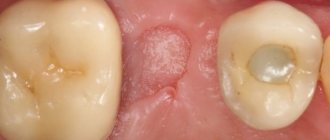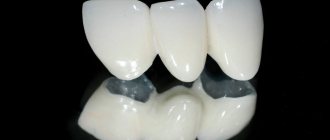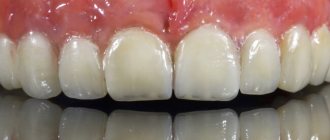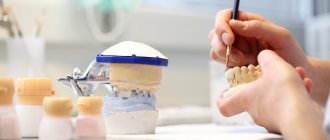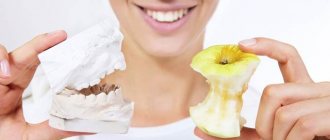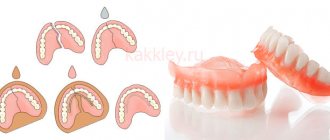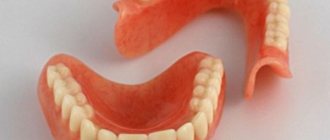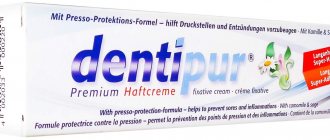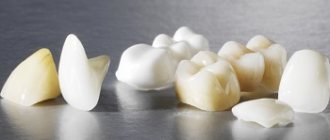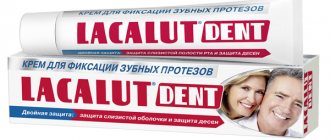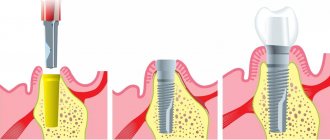Artificial teeth and material requirements
10/08/2014
The conditions for achieving a good result - especially with complete prosthetics - are complete coordination of the various stages of work, the choice of materials taking into account indications and differences in properties, the correct use and processing of materials.
The combination of artificial teeth made of PMMA with highly cross-linked or organic fillers or teeth made of composite materials with nanofilling represent the current state of the art in the manufacture of prostheses. The advantages of individual components, such as a composite tooth with a relatively hard composite shell covering the dentin core, allow the optimal reconstruction of the functional occlusal morphology of the posterior teeth and the esthetic appearance of the anterior region. However, when purchasing a high-quality product, we often have doubts about the justification of its price. Reluctance to move away from behavioral stereotypes is a game with illusions. To ensure that the success of prosthetics does not remain an accident, we must constantly find new paths and follow them. Among other things, standardization of technology, increased knowledge of functional processes, acquisition and transmission of data to the articulator, accuracy, as well as knowledge of materials and their properties should be mentioned. This article brings together and presents well-known things, combining them with new knowledge.
Rice. 1 Not only is vigorous apple-biting a desire for every denture wearer, but stability, high functional chewing ability and aesthetics also play an important role.
Teeth: contribution to our health
When teeth are lost, up to adentia, not only does the ability to fully communicate disappear, but serious problems arise when eating food and especially when digesting it.
The transformation of substances alien to the human body into the actual substance of the body (Fig. 1) begins in our digestive system with the mechanical grinding of ingested food by chewing with the teeth of the upper and lower jaws. Only food that is optimally broken down by our teeth can be further processed and used in the body. In order to maintain a healthy body, patients after losing their own teeth require high-quality and, above all, functional artificial teeth. But which ones? The choice of artificial teeth on the world market is very large. All manufacturers and dealers try to present their products optimally through advertising. This, of course, is legal, but upon closer examination, as in all life, only in rare Fig. 2 The lateral teeth of these dentures are completely worn out and have lost their functional ability. They must certainly be replaced with new teeth. Such a large loss of substance simultaneously means vertical sagging and automatically has a great impact on the overall appearance and aesthetics.
Rice. 3 and 4 Such worn teeth allow only coarse grinding of food without the necessary fine splitting. Color changes and aging develop during wear and are highly dependent on food intake (coffee, tea, red wine, etc.).
Rice.
5 to 8 Lateral teeth for the lower jaw from European manufacturers. Neither the constructive nor the functional morphology of these teeth is taken into account. Compared to the natural model, many desires remain unfulfilled. They appear unplanned and with a disorganized occlusal morphology. Rice.
9 and 10 Posterior teeth of the Tribos 501 series with a nature-copied, clearly structured and organized occlusal morphology (for example, additional contacts in the primary morphology - NAT). In cases, in reality we get what is indicated on the “packaging”. The patient may not know or appreciate such things (we give him little opportunity to obtain information), and therefore all parties involved, manufacturers, dealers, dentists and dental technicians, have a responsibility to him, the patient. We expect health to stay with us forever. YETI can help you with this. Is a great denture a lifetime purchase? The concept of “magnificent” is used thoughtlessly in our language practice. It is really incorrect to use this word in relation to our own affairs, since this would mean that we put them on the same level as nature (and only nature is magnificent). But despite all efforts, we are still far from its level. The answer to the question of whether full dentures are a lifelong purchase is definitely “no.” If we think about how our body changes throughout life, it becomes clear that the toothless jaw, which forms the basis for dentures, changes, and dentures must be adjusted. Particularly rapid and, unfortunately, frequent changes occur due to incorrect loads. In addition, today's dentures are made of
Rice. 11 Contact ratios in the centric (static occlusion)
Rice. 12 Dynamic contact ratios (dynamic occlusion at closing stages 1a and b)
Rice. 13 Dynamic contact ratios (dynamic occlusion at opening stage 2)
Rice. 14 Additional contacts in primary morphology
Rice. 15 Incipient functional surfaces in secondary morphology
Rice. 16 Expanded functional surfaces in secondary morphology
Rice. 17 Lateral teeth of the upper and lower jaw from the Tribos 501 SM series. The entire additional program of functional surfaces is displayed, which is contained in the TRIBOS 501 artificial teeth as a middle spacer to the reference plane and to the condyles. For each specific patient, fine functional adaptation must be carried out.
Rice. 18 – 22 Tables provide an overview of tooth composition, hardness, wear characteristics, viscosity and susceptibility to discoloration
artificial materials. No matter how hard we try to get closer to obtaining a natural sample, artificially made materials still remain within their boundaries. Synthetic materials (teeth) are subjected daily to enormous chewing loads, high compressive loads, and change their surface appearance due to natural wear and tear during food processing (Figures 2 and 3). In addition, dentures are constantly in a humid environment. This leads to some absorption of moisture, the coloring agents in our food cause discoloration and even create deposits (Figure 4). The material cannot withstand such loads for a long time. In this regard, it is recommended that you regularly
Rice. 23 Cut TRIBOS 46 SM with a family of natural surfaces. workpiece
Rice. 24 Graphic representation of possible separation of various synthetic materials
Rice. 25 More expensive and labor-intensive production affects manufacturing costs and selling prices.
Rice. 26 and 27 A fully stocked dental cabinet helps and simplifies the selection of shapes and colors
Rice. 28 The reference pin register provides information for the center and the plaster key provides space and placement information
Rice. 29 This protrusive recording device is made using wax inserts in the oral cavity
Have your dentures checked by a dentist and, if necessary, renew your teeth depending on the degree of wear (approximately every five years). In this regard, I would like to draw the attention of dentists and dental technicians to the importance of carrying out significantly more explanatory work to the patient and providing them with more information. It is also special that in other areas of human activity such things as wear and tear are considered normal. We all know that a car can't get by with just one set of tires. We must use summer and winter tires, and everyone knows that driving a car with worn tires can be life-threatening. Do we also treat the health of our patients with worn-out prostheses whose performance is reduced?
Main selection criteria
The choice of material and method of prosthetics should be based on information about the condition of your teeth. This can be provided by your dentist after examining your mouth.
The main points that the doctor relies on when deciding on prosthetics:
- general condition of the mucous membrane. For periodontal diseases, restoration is not recommended;
- crown placement: crowding, reversal;
- stability of the root system;
- degree of crown destruction. If it is destroyed and it is not possible to restore it using composite materials, the source of destruction is reconstructed with an anatomical inlay;
- quality of the root part and cervical tissues;
- size of the defect area. Depending on how many teeth need to be inserted, a single crown, implant or special dental structures are used;
- location of the restored area of the dental row. This indicator affects the choice of material for making crowns, since the load on the jaws is distributed unevenly.
Modern materials and techniques allow dentists to effectively restore teeth, taking into account all physiological characteristics, but at the same time they have a different price range.
Therefore, the dentist’s indications for reconstruction are advisory in nature, and the patient himself decides what suits him best.
Normally functioning teeth and materials.
It was already mentioned above that there is a huge offer of artificial teeth. Upon closer examination, it becomes clear that the requirements for function and functional morphology, as they are given by nature, in most of these proposals are either not taken into account at all or are taken into account little. It does not matter how steep the individual projections are, the morphology of the teeth must be formed in such a way that functional surfaces can develop between the segments of each tooth with the help of antagonists. These surfaces have a reference direction and a reference angle (such as CE or FH) to the reference surface. This is a standard program corresponding to nature, which is included as a prerequisite in the work on Tribos SM teeth (Fig. 23). The patient can only make absolutely accurate adaptation independently. This means that artificial teeth must be made from a material that allows precise adaptation. In this case, the concepts of “wear”, “viscosity” and “hardness” play an important role (Fig. 18-22). An extremely hard material is not necessarily the first choice for such conditions. The patient does not have time to form his ideal functional model. He needs functioning teeth as quickly as possible. The material itself cannot solve many problems (Fig. 24). And therefore, artificial teeth are created from various synthetic materials suitable for the tasks, and different requirements give rise to corresponding costs (Fig. 25). The correct choice of shape for the patient goes through enormous possibilities of choice (Fig. 26, 27); selection by color should also, if possible, be carried out in different lighting conditions, since in daylight, fluorescent lamps or with simple artificial lighting of the same tooth it is possible discover different color shades. By recording patient data with appropriate recording devices (Fig. 28, 29), these defined surface patterns can be modified at low cost using analog patient data.
Conclusion.
The selection and application of artificial teeth based on information about both functional processes and functional patterns corresponding to nature is an absolute necessity - after all, who doesn’t want to live a full life, enjoy a great menu and a beautiful smile? (Fig. 30-32)
Rice. 30–32 Our goal is harmony between function and aesthetics. For the benefit of patients and, finally, ourselves, for motivation for the next correct restoration.
If you want to be happy, Give happiness to everyone around, Good, once done, Closes a full circle.
“Willst Du glücklich sein im Leben, trage bei zu anderer Glück, denn Freude, die wir geben, kehrt ins eigene Herz zurück”
(Johann Wolfgang Goethe)
Methods for restoring molars and premolars
Restoration of chewing teeth has its own characteristics: the installed structure must easily withstand excessive mechanical stress. Most often, dentists recommend the following methods for restoring teeth:
- Implantation .
In the case of the masticatory group, it has a significant difference: implantation is carried out using a two-stage technique using root-type titanium implants. It takes a long time, but is the most preferable option. Often, this method requires preliminary bone grafting. The cost of implanting a chewing tooth starts from 30 thousand rubles. - Clasp prosthesis .
It is a base that imitates gums, on which artificial crowns are installed. It is used in the absence of chewing teeth on both sides of the jaw. Its peculiarity is the uniform distribution of the load, which is important when other teeth have poor stability. The disadvantage of the clasp is that ceramic crowns cannot be installed on it. The cost of the cheapest clasp is 20 thousand rubles. - Removable dentures .
This is the most cost-effective option for restoring the chewing teeth. For this purpose, acrylic or nylon prostheses are used. Their only advantage is the cost, which varies from 15 thousand rubles. and higher. Otherwise, this method has a bunch of disadvantages: greater mobility, stress on the gums, side effects.
We will tell you how to treat stomatitis in the mouth of children aged 1 year and older.
We suggest that you read the instructions for using Kamistad ointment.
Here: https://zubovv.ru/protezirovanie/nesemnyie-p/viniryi-np/foto-do-i-posle-osobennosti-raznovidnosti.html - we look at pictures of patients’ smiles before and after the installation of veneers.
